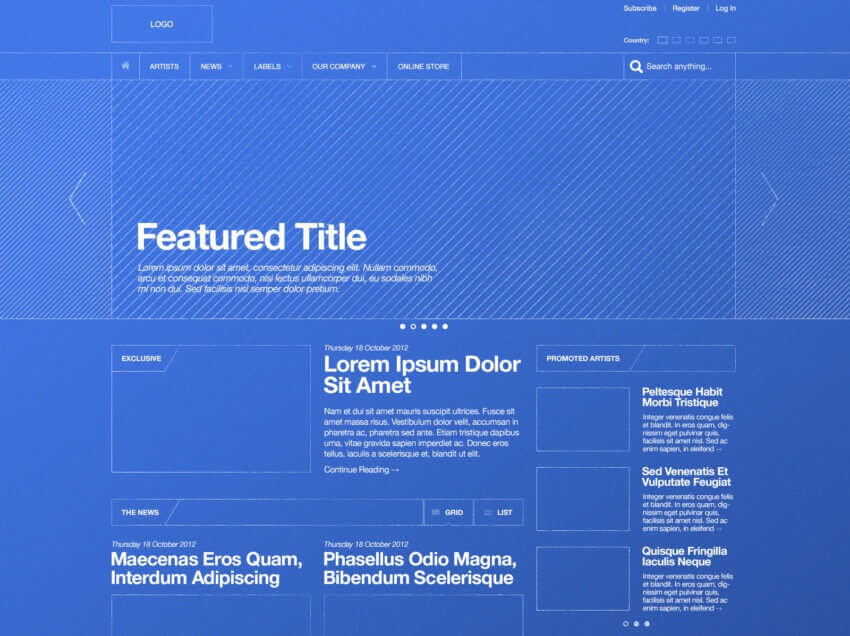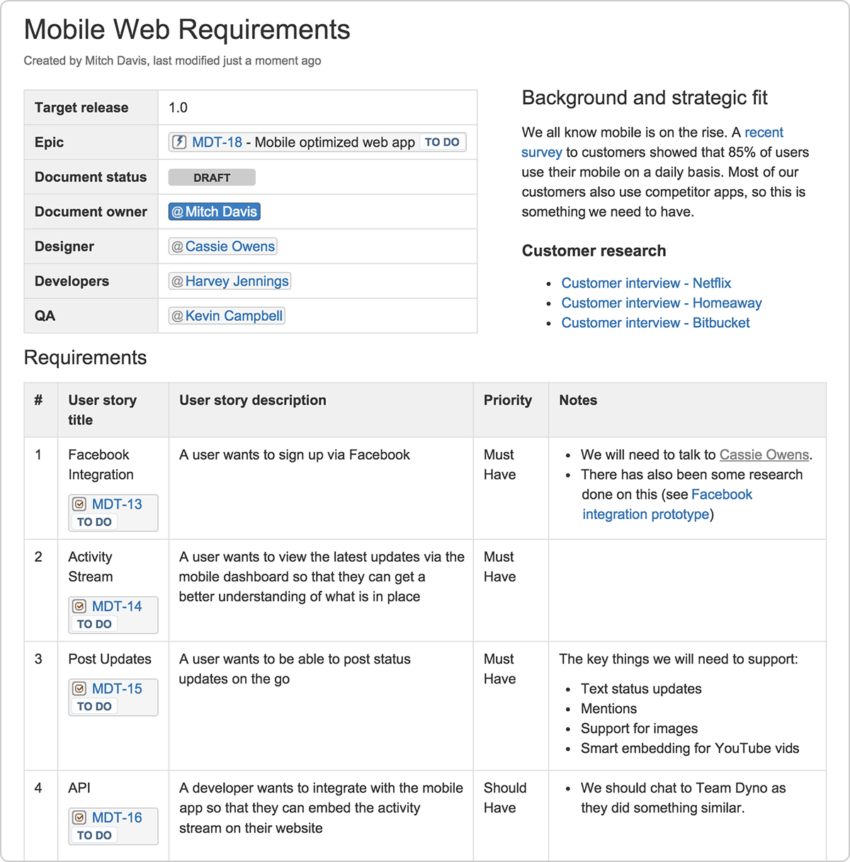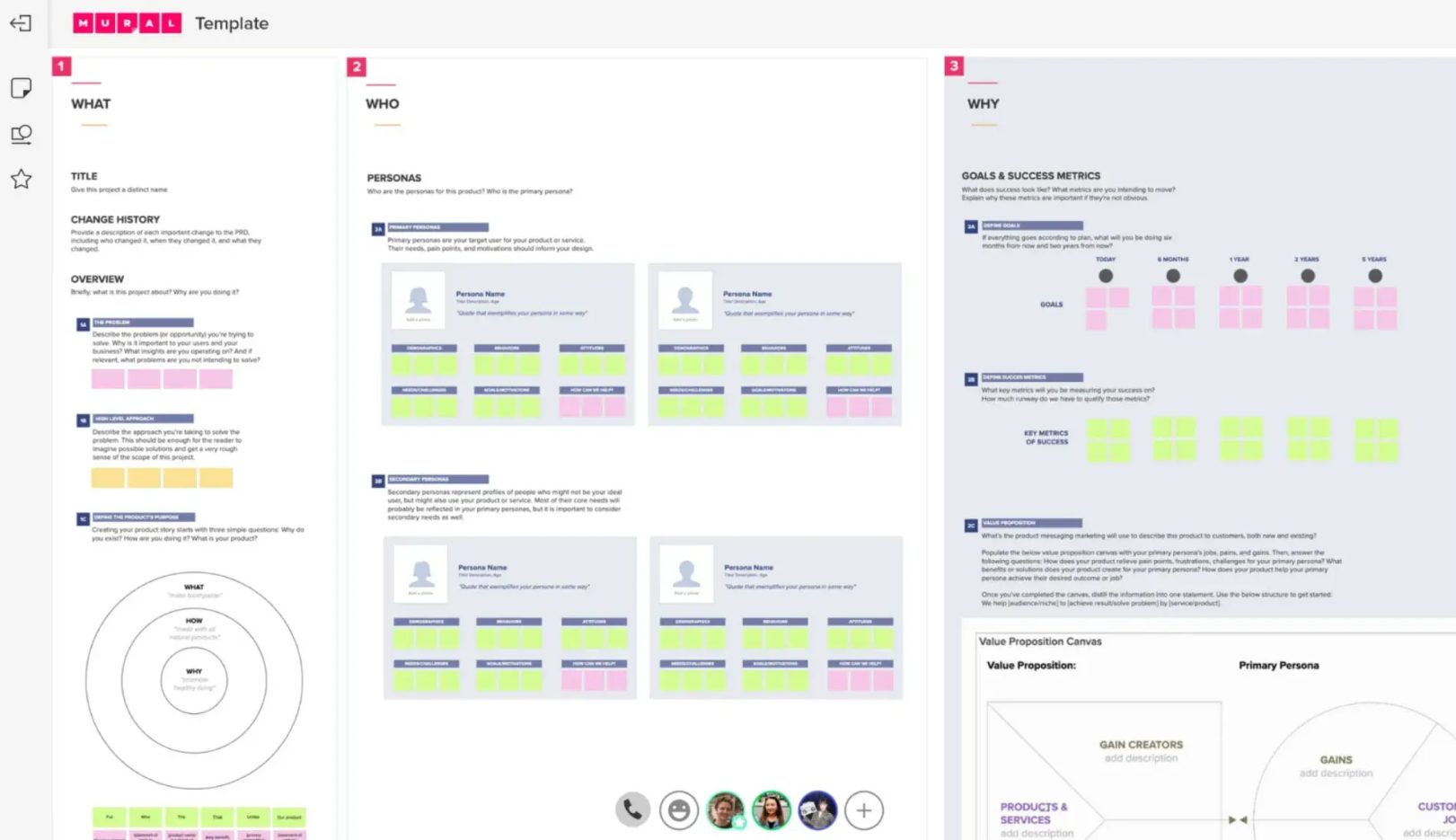How to Write an Effective Product Requirements Document (PRD)
To create a successful product, it’s essential to follow all the necessary steps from the very beginning. To make sure that no time will be wasted on misunderstandings, you might want to write a product requirements document. There are many examples online; however, it can be too easy to get lost in different options. In this article, we will go through all the aspects of creating a PRD so that you’ll ✓learn what should be included, ✓review what specifications exist, and ✓be perfectly able to create your own PRD template.
What is a Product Requirements Document and why is it important?
The PRD document is an initial one, the starting point in the process of developing your new product. Basically, it describes all the features, specifications, and functionality of a product, and also declares the conditions and stages for design and development. Writing a good PRD is similar to the place where the marathon of creation begins. The better you explain the rules before the race starts, the better the chance that everything goes smoothly and correctly.
In PRD, you gather all the essential details needed for the process of development. You also mention goals and objectives, as well as expected results of each stage of work, the time required for the development of MVP, and any additional technical details that might be of help when the actual work begins. Remember that this is not a list of dream descriptions, but a technical document based on research and extensive analysis with the main goal to minimize the risk of misunderstandings, and the necessity of implementing changes due to those misunderstandings.
Pros, cons and alternatives

The detailed and effective PRD Product Requirement Document takes time to create. Sometimes, it also takes money, as technical specifications might require additional expertise from the outside.
Let’s look at the pros of PRD, first:
- Helps you get a complete picture of a future product.
- Provides an approximate budget for all the stages of development.
- Gives ideas about the required time it takes before you get it done.
- Establishes a mutual understanding between all team members.
- Eliminates (at least, partially) potential problems during development.
On the other hand, there are a couple of disadvantages:
- Spending additional time on document writing, instead of starting the development process right away.
- May require significant investment, as technical specifications must be accurate and designed with enough knowledge and expertise on the matter.
To eliminate these disadvantages, there is an alternative – agile development done in sprints (called iterations). This is based on a number of principles and allows you to start the process almost at the moment the idea appears in your head. In this case, you will have to participate in the development and control of the process. Your project will be split into smaller tasks and be completed during these iterations, which usually take about two weeks.
In this case, you will:
- Save precious time and money on creating a product requirement document sample.
- Be able to change the product on the go.
- Identify the potential problems at the early stages.
- Have more control over the process.
Of course, there are also some cons that you might want to consider writing a PRD:
- Unclear timeframes.
- Unclear cost of development.
- No clear picture of what you end up receiving in the end.
Based on the information above, if you know what you want and have a clear idea of how much time and money you want to spend on it, creating a product requirements specification in advance might still be a more suitable option.
Tips on how to actually write a Product Requirements Document

Here we consider essential PRD requirements. First of all, let’s remember the goal of the document – to communicate the concept of the product under development and arrange all the details that are useful for the development process. Long story short, all the technical specifications included in the document ensure that the future product will be compliant with all requirements. These tips will give you a quick understanding of how to write a good PRD for your development team:
- All the functions mentioned should be as detailed as possible; goals should be mentioned for the best implementation.
- Even technical details should be written in simple language that is easy to understand for any business person.
- The tasks described in the document should include deadlines.
- All the requirements should be specific without the use of general phrases like “use the best possible option”.
- Keep it detailed but don’t overdo it.
In the next section of this article, we continue learning about how to write a product requirements document, and you will see a sample outline for it.
What components should be included in your Product Requirements Document template?

Now we are going to go through the components of a well-developed product requirements document template that can be used as a template. Once you understand the idea behind each section, you will have no problem looking at it from an experienced product management specialist’s point of view while creating your own docs. Here are the essential components of a product requirements template, which may still be somewhat flexible in sequence, depending on what business you have or other factors:
- Goals and objectives.
- Target users and their needs.
- Main components and sitemap.
- Initial and future features.
- Non-functional but also important requirements.
- Wireframes.
- Potential risks.
- Analytics.
Goals and objectives

This section provides a general idea of the future product and explains why it should be developed in the first place. It helps to set the team on the right track from the very beginning of the project.
Here, you’ll answer general questions such as:
- Why should this product be created?
- What problems will it solve for real people?
- What features will fulfill each problem-solving task?
- Who will benefit from the product?
- What are your mission and vision?
These are just samples of questions that can be used as a PRD example. Depending on your ideas, you can exclude some or add more. Basically, this section of a PRD is a high-level description of everything concerning the future project.
Target users and their needs

Before going into more detail about the product, you need to establish and describe your target audience. It might be hypothetical, but detailed enough so that the reader can imagine the user. The most simple and pleasant way is to start with these characteristics: age of potential clients, their genders, possible occupations, levels of education, and geographical locations.
To create a valuable product right from the start, you need to answer the who-what-when-how questions regarding your customers. The main idea here might be shaped as the ability to see the future product through the eyes of those who might use it.
Also, mention the needs that are to be met with the product. For example:
Need/problem: The user needs the opportunity to pay for the item with bitcoins.
Solution: The user can launch an app, tie it to the wallet, and pay directly.
Main components and sitemap

Here, you should have a detailed description of all the pages of the website or the screens of the application. Start with analyzing the needs of the audience described in the previous section, and base the components on their needs.
As a sample, if you build an eCommerce web project, you need to build a detailed sitemap.
It should include:
- A list of all pages so that the development team has the whole image right away
- The hierarchy for all the pages will help design the navigation. This is not a must-have, but quite a good addition for a complete Product Requirement Document.
It is appropriate to include some graphs in the sample PRD that would show the connection between components and suggest possible user flaws.
Initial and future features

This section should describe the features that will be included in the product in different stages within a product requirements document sample. No need to describe all the tiny details, just provide the team with a general understanding of the features you plan to start with, and what features you’d like to add later.
For our Product Requirements Document example, let’s imagine that you want to start with a three-page website that includes a page with five items for sale; however, in the future, you want to increase the number of goods you sell as well as add a blog and interactive color-matching assistant. You need to include your plans in the document, as those who build the website will need to establish a foundation that can keep up with the growing number of features.
Non-functional requirements

This part is about all the ‘additional’ requirements that are different from those that are purely functional. Communicate these special product requirements in the best possible way.
Here are some questions that might get you on the right track:
- What should the mobile app/website be built on?
- Where should it be hosted?
- With what browsers should it work?
- How many simultaneous users should it be able to support?
Wireframes

This section of a product requirements document template is optional and good to have. Basically, wireframes are the layouts of pages that give the general outline of elements and features on the page. No need to include fonts, logos, colors or other design elements, just the most basic information. If you have a general idea, just include it here. It can even be a hand-drawing.
For complicated products, this section might require hours of work from designers before approving the final version. Keep this in mind before trying to draw any complicated schemes.
Potential risks

If there are any potential risks, mention them here. The development team might try to tackle those segments of software that are risky in order to decrease the risk, or at least prevent you from investing too much of your money and time into something that might not be claimed after all.
Analytics

Creating a sample Product Requirement Document, it’s important to mention that you might want to include a section about analytics. This will provide your team with an understanding of what metrics you’re planning to use to measure the success of the project.
Creating this section, you may want to keep in mind your marketing department. What metrics are important for their work? For eCommerce projects, it would be the conversion rate. Inform the team what is needed so that it can be implemented early.
Best PRD Examples: Analysis
In this section, we will show you some samples of well-written Product Requirements Documents. First of all, it is worth mentioning that you can have your PRD in any size. Meaning that most of the samples online will start from one-page-fit-it-all PRD and end up with documents of 3-5 and up to 10 pages or more. We will take a closer look at each of those variations going from small to large.
One-page PRD
As you can see from the example below, it is a well-designed one-page product requirements document. You may use this sample as a template to explore what elements should be, or maybe, included in your one-page PRD. Also, based on this example we can see the main benefits of having a smaller PRD.
First of all, it saves you, and everyone else, the time learning about the product since all the key information is presented in a concise manner.
Secondly, short PRD gives more space for change. It is much easier to cut a piece or replace it. Plus, surprisingly, smaller size leaves more space for creativity, there is no need to follow the same standard format as you’d have to with a bigger PRD. Overall, a one-page document can fit exactly as much context as you need to explain your product in simple terms.

Here we have another example of a product requirements document, but this time it is a much simpler looking sample. Although it looks uncomplicated, it is the very reason it is the one to choose. The accent on simplicity for prd examples will only underline the actual message of the document.

This PRD product requirements document template is basically made design-free, which makes you look straight at the listed facts. Such a layout also leaves you with no choice but to be concise and consistent in your language. This PRD style can offer only necessary information, which is already fully completed and doesn’t require any additional explanation, meanwhile, it hasn’t got much room for any other interpretation.
Classic PRD samples
There are also options to have your product requirements document template Word several pages long; as we can see from our next example which is 5 pages long. Considering how to write a PRD, it’s worth mentioning that it normally includes a full-body text, starting with a proper introduction of your product and a breakdown of the PRD components mentioned above.

In detail PRD
Finally, in case your product requires more space for explanations, you can have a PRD document template up to 10 pages. As the sample shows, starting your PRD with a table of contents to map your way through is much better. Larger PRDs should offer not just a full description of all the components but also break them down into subcategories, explaining all the work done in detail. Such product requirements documents give you enough space to depict and highlight any special part of your product, so no questions are left unanswered. your PRD may also be filled in depending on your project management tool. For example:

A detailed PRD may become the only document that defines the specific nature of the software. The level of detail should be complete, but not excessive. To succeed with a detailed prd example you should:
Describe each requirement separately, or break them into logical groups
You do not need to collect all the requirements in one paragraph. If they are interrelated, group them, for example, according to functionality. Such a division will facilitate perception and help to correctly prioritize.
Be consistent
The document should have a simple structure so that it is easy to read. If the product is divided into modules, such modules should be arranged in a logical sequence: for example, if the product is created by the user, then the user module is needed first, and then the product module, etc.
Give clear instructions
Try to avoid phrases such as “if necessary”, “if possible”, etc.
Eliminate any ambiguities
Try to avoid the words “about”, “and so on.” Any definitions used must be unambiguous: for example, the word “comfortable” can mean different things to different people. Mind that.
You need to talk not about HOW to do it, but about WHAT you need to do. Another template sample from Mural:

Put requirements in one place
Keep all requirements in one place (for example, we use Trello, etc.): there should be one entry point for requirements, and all project participants should know where to find them.
Stick to integrity
If several people are working on the requirements, identify one person who will be responsible for reconciliation, otherwise, integrity will be lost.
For all projects, regardless of complexity and duration, product requirements should include information about:
- for what purpose and for whom the product is created;
- what the product will look like (remember that the project does not necessarily start with a beautiful design, prototypes or sketches can be used in the first stage, and this will be enough);
- how the product will work (scheme of user interaction with the product);
- how it will be measured and by what criteria the success of the product will be evaluated.
The requirements in such a document reflect the customer’s vision and expectations for the product. If the customer has specialists who have an idea of how to optimally formalize the requirements, then it is the customer’s side that does this. But if there is no such experience, then the development team can take over the design of the requirements. If you need more information about writing a product requirements document that will drive you to success and need some help, contact us. We know everything about best prd examples, how to write prd for design, and how to write instructions for it, as well as provide you with an ideal prd template customized for your project.




![How to Grow a Business & a Digital Product [Interview with a Founder of Fireart Studio]](https://fireart.studio/wp-content/uploads/2020/02/823u836su-2.gif)
















